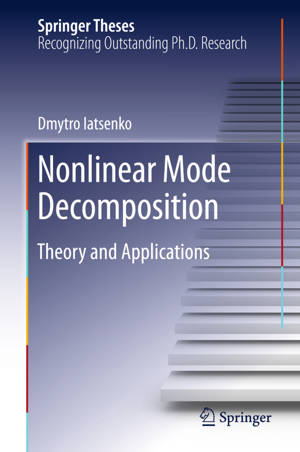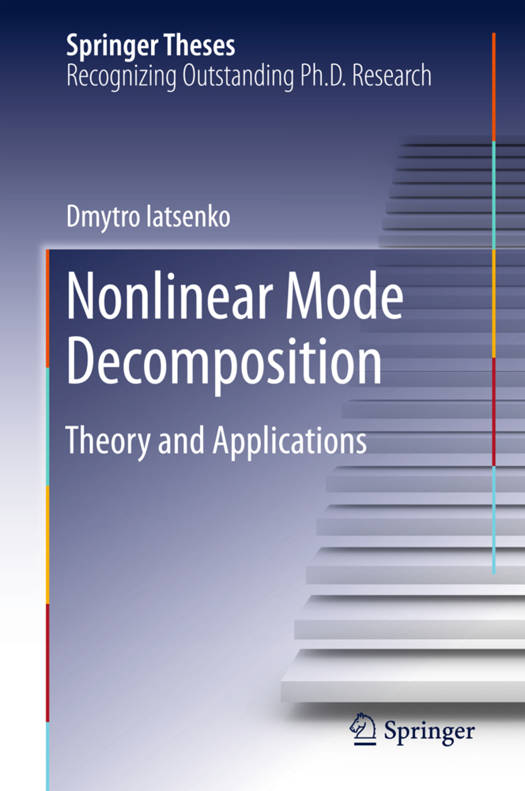
- Afhalen na 1 uur in een winkel met voorraad
- Gratis thuislevering in België vanaf € 30
- Ruim aanbod met 7 miljoen producten
- Afhalen na 1 uur in een winkel met voorraad
- Gratis thuislevering in België vanaf € 30
- Ruim aanbod met 7 miljoen producten
Zoeken
€ 105,45
+ 210 punten
Uitvoering
Omschrijving
This work introduces a new method for analysing measured signals: nonlinear mode decomposition, or NMD. It justifies NMD mathematically, demonstrates it in several applications and explains in detail how to use it in practice. Scientists often need to be able to analyse time series data that include a complex combination of oscillatory modes of differing origin, usually contaminated by random fluctuations or noise. Furthermore, the basic oscillation frequencies of the modes may vary in time; for example, human blood flow manifests at least six characteristic frequencies, all of which wander in time. NMD allows us to separate these components from each other and from the noise, with immediate potential applications in diagnosis and prognosis. Mat Lab codes for rapid implementation are available from the author. NMD will most likely come to be used in a broad range of applications.
Specificaties
Betrokkenen
- Auteur(s):
- Uitgeverij:
Inhoud
- Aantal bladzijden:
- 135
- Taal:
- Engels
- Reeks:
Eigenschappen
- Productcode (EAN):
- 9783319200156
- Verschijningsdatum:
- 1/07/2015
- Uitvoering:
- Hardcover
- Formaat:
- Genaaid
- Afmetingen:
- 156 mm x 234 mm
- Gewicht:
- 403 g

Alleen bij Standaard Boekhandel
+ 210 punten op je klantenkaart van Standaard Boekhandel
Beoordelingen
We publiceren alleen reviews die voldoen aan de voorwaarden voor reviews. Bekijk onze voorwaarden voor reviews.











